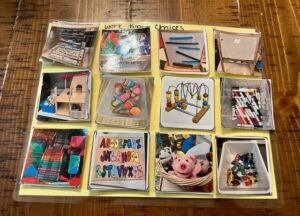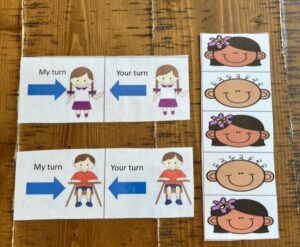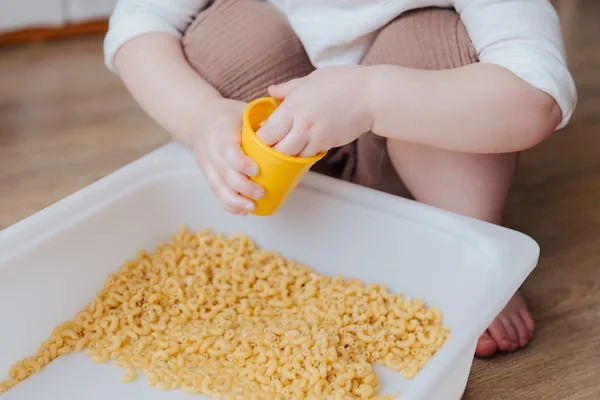
In the last blog I wrote about my step-by-step process to identify problem areas or times of the day for my students and also focused on whole group time. Another area my students frequently struggle with is play time. They may have difficulty choosing where to play, choosing what toys to engage with, engaging with toys for short amounts of time, difficulty sharing and taking turns with peers, and difficulty engaging in play with peers.
First, I observe the student for a few days to determine what their interests are during play time. Do they like to go to the sand table everyday? Are they wandering the room? Do they play with toys for 30 seconds and then walk away? Do they take toys from others? All these questions help me identify what their needs are.
Second, I prep materials that I feel will benefit the students’ play goals. I may take photos of all the toys or activities the student gravitates towards, along with some new ones that I would like to work on with them and create a visual schedule. I may take photos of the students in the classroom to create a turn taking strip so when they are having difficulty sharing and taking turns, I can pull out the visuals. I may use a first-then board to help students understand the activities that will occur. I also may create choice boards so the student can choose where they want to play using photos.

Play Choice Board

Example of a turn taking strip: Use real photos of the kids to help your student understand whose turn it is next.
You can also make step-by-step play strips to help your students learn how to play with a toy, such as building with blocks, feeding the baby, making a meal in the kitchen, building a train track. Take photos of each step in the play sequence and put them all together. You will need to model the steps with your students first. Start with teaching their favorites!
Next, I implement these interventions. Remember to sit down with the classroom teacher, assistants, and/or therapists that may also be working with your students. It will take a lot of modeling to help your students understand the visuals and how they work. Be consistent and over time they will understand. I also bring a visual timer for students that may pick a toy and play for 30 seconds and then quickly move to the next activity. I will set the timer for 2 minutes depending on the student and have them stay in the area or with an activity until the timer goes off.




